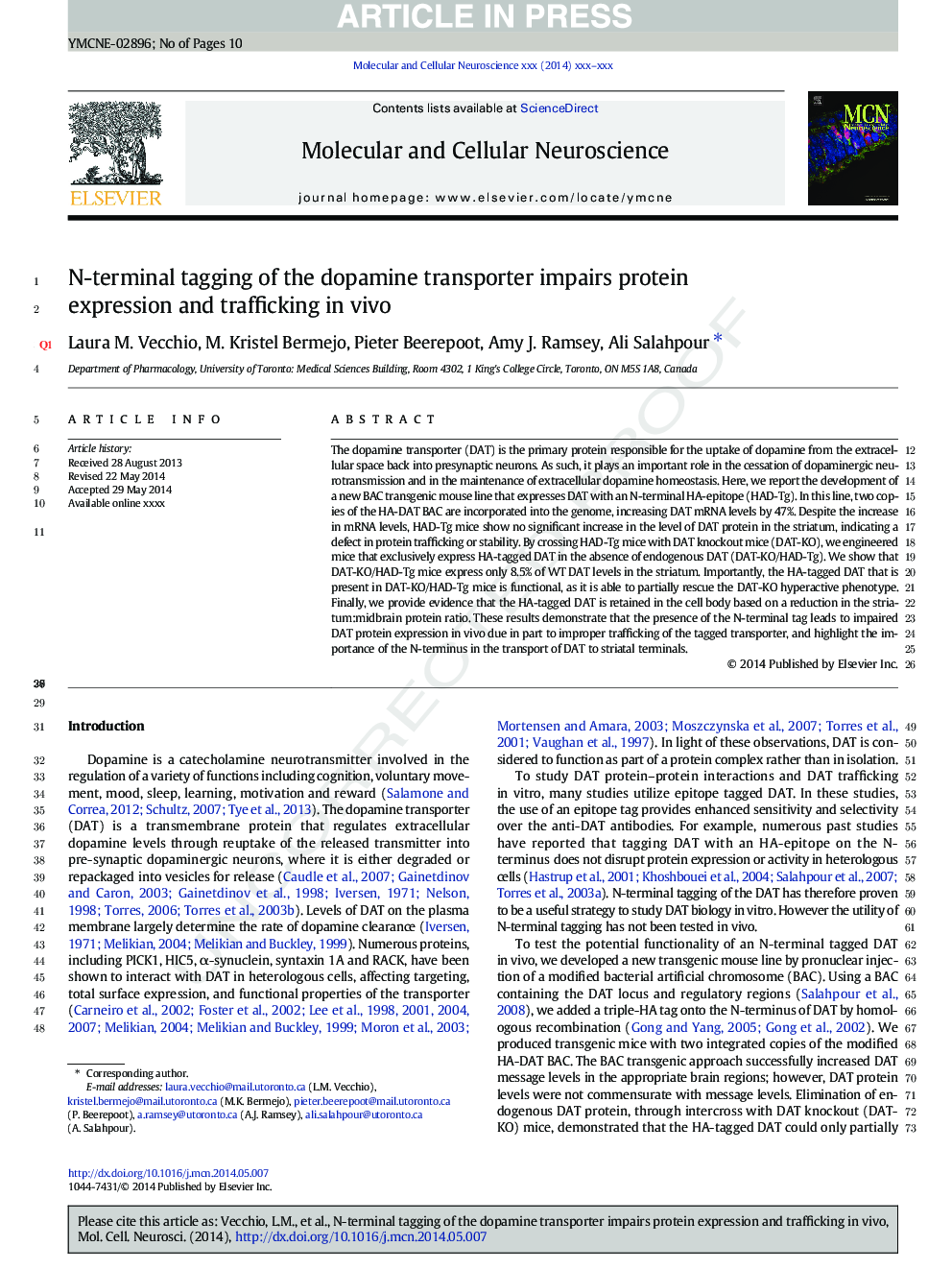| Article ID | Journal | Published Year | Pages | File Type |
|---|---|---|---|---|
| 8478610 | Molecular and Cellular Neuroscience | 2014 | 10 Pages |
Abstract
The dopamine transporter (DAT) is the primary protein responsible for the uptake of dopamine from the extracellular space back into presynaptic neurons. As such, it plays an important role in the cessation of dopaminergic neurotransmission and in the maintenance of extracellular dopamine homeostasis. Here, we report the development of a new BAC transgenic mouse line that expresses DAT with an N-terminal HA-epitope (HAD-Tg). In this line, two copies of the HA-DAT BAC are incorporated into the genome, increasing DAT mRNA levels by 47%. Despite the increase in mRNA levels, HAD-Tg mice show no significant increase in the level of DAT protein in the striatum, indicating a defect in protein trafficking or stability. By crossing HAD-Tg mice with DAT knockout mice (DAT-KO), we engineered mice that exclusively express HA-tagged DAT in the absence of endogenous DAT (DAT-KO/HAD-Tg). We show that DAT-KO/HAD-Tg mice express only 8.5% of WT DAT levels in the striatum. Importantly, the HA-tagged DAT that is present in DAT-KO/HAD-Tg mice is functional, as it is able to partially rescue the DAT-KO hyperactive phenotype. Finally, we provide evidence that the HA-tagged DAT is retained in the cell body based on a reduction in the striatum:midbrain protein ratio. These results demonstrate that the presence of the N-terminal tag leads to impaired DAT protein expression in vivo due in part to improper trafficking of the tagged transporter, and highlight the importance of the N-terminus in the transport of DAT to striatal terminals.
Related Topics
Life Sciences
Biochemistry, Genetics and Molecular Biology
Cell Biology
Authors
Laura M. Vecchio, M. Kristel Bermejo, Pieter Beerepoot, Amy J. Ramsey, Ali Salahpour,
